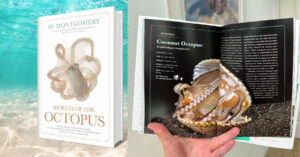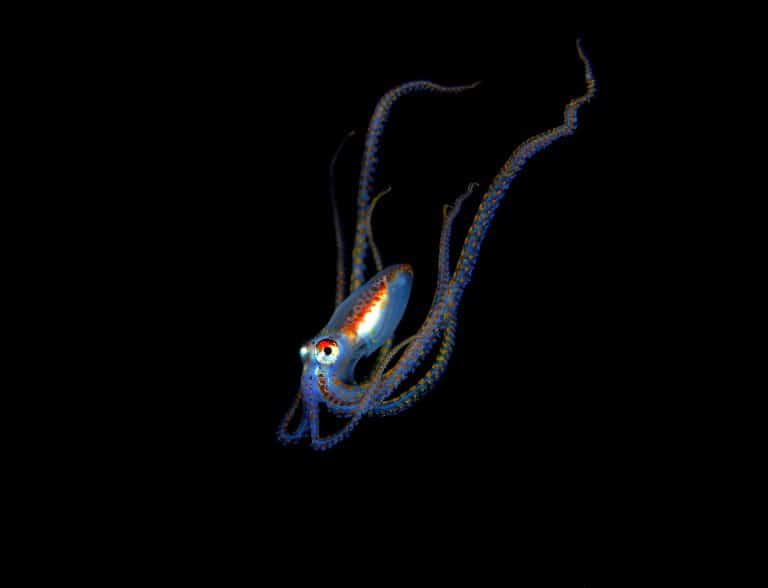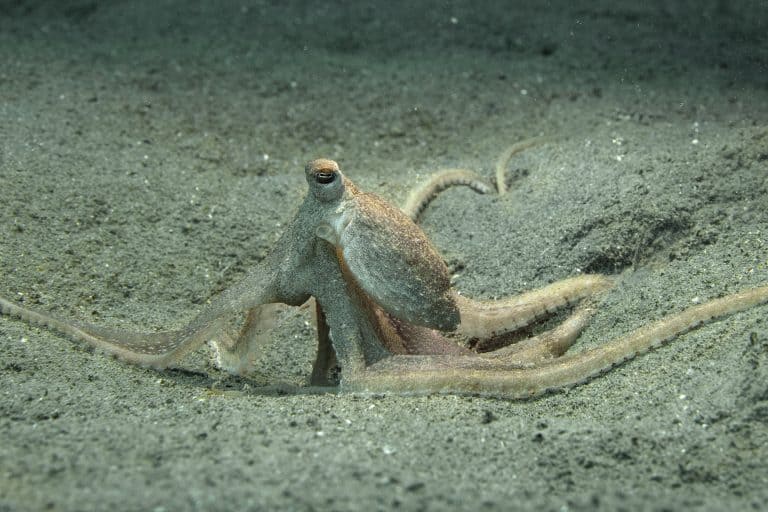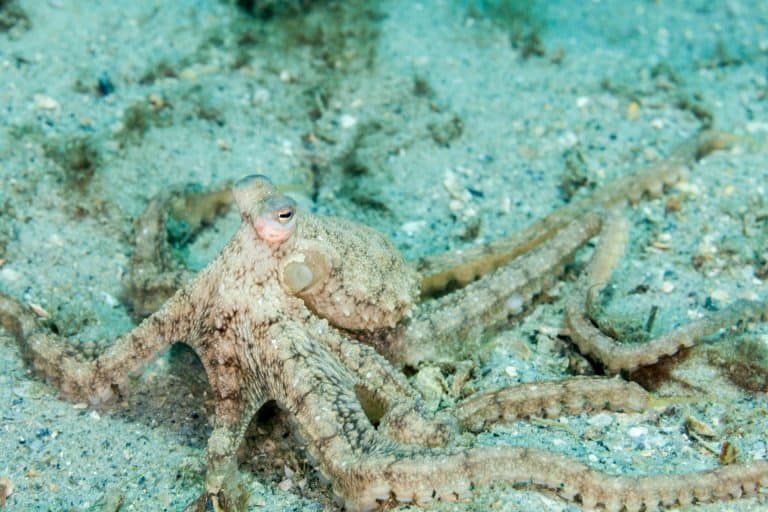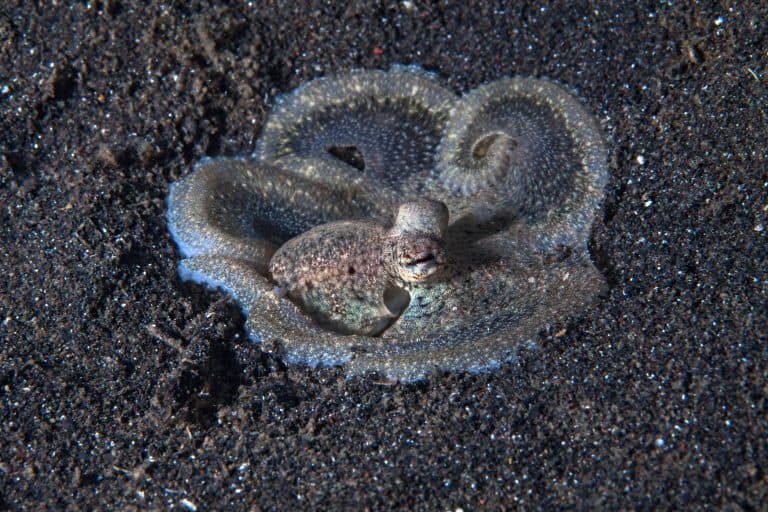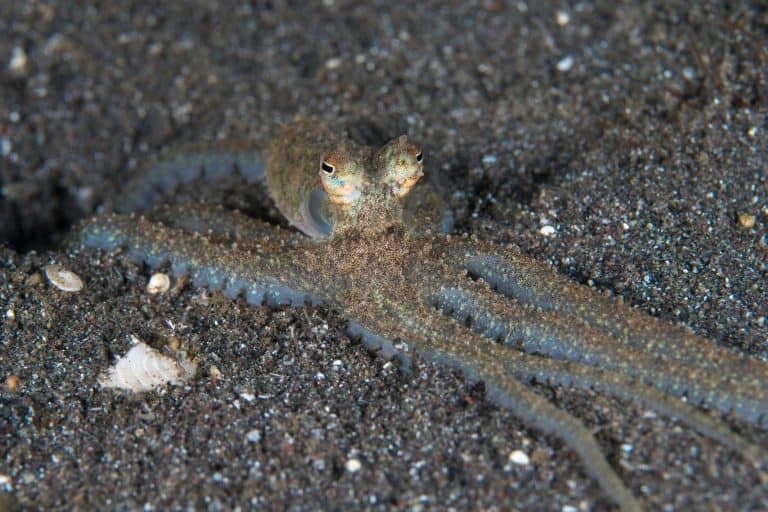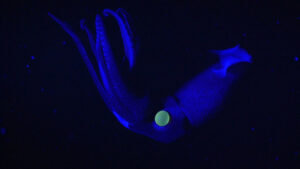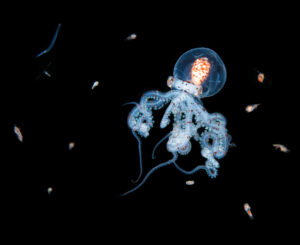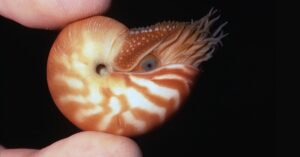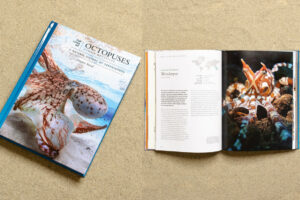Bennice CO, Rayburn AP, Brooks WR, Hanlon RT (2019) Fine-scale habitat partitioning facilitates sympatry between two octopus species in a shallow Florida lagoon. Marine Ecology Progress Series 609:151-161. doi: 10.3354/meps12845
Jereb, P.; Roper, C.F.E.; Norman, M.D.; Julian K Finn (eds)
Cephalopods of the world. An annotated and illustrated catalogue of cephalopod species known to date. Volume 3. Octopods and Vampire Squids. FAO Species Catalogue for Fishery Purposes. No. 4, Vol. 3. Rome, FAO. 2014. 370 p
Guerrero-Kommritz J and Rodriguez-Bermudez A (2019) Soft-bottom octopods (Cephalopoda: Octopodidae) of the southern Caribbean with the description of a new species of Macrotritopus. Marine Biodiversity 49: 1197–1215. https://doi.org/10.1007/s12526-018-0903-8
Hanlon RT (1988) Behavioral and body patterning characters useful in taxonomy and field identification of cephalopods. Malacologia 29:247-264
Hanlon RT, Forsythe JW, Boletzky SV (1985) Field and laboratory behavior “macrotritopus larvae” reared to Octopus defilippiVerany, 1851 (Mollusca: Cephalopoda). Vie Milieu 35:237-242
Hanlon, R. T., A. C. Watson, and A. Barbosa. 2010. A “Mimic Octopus” in the Atlantic: Flatfish Mimicry and Camouflage by Macrotritopus defilippi. Biological Bulletin 218:15-24
Huffard CL, Saarman N, Hamilton H, Simison WB (2010) The evolution of conspicuous facultative mimicry in octopuses: an example of secondary adaptation? Biol J Linn Soc 101:68-77
Norman, M.D. 2000. Cephalopods: A World Guide. Frankfurt, Germany, IKAN Publishing. 320 pp.
Bennice CO, Brooks WR, Hanlon RT. Behavioral dynamics facilitate resource partitioning and enable tight coexistence of two octopus species in a shallow South Florida lagoon (in prep for JEMBE)
